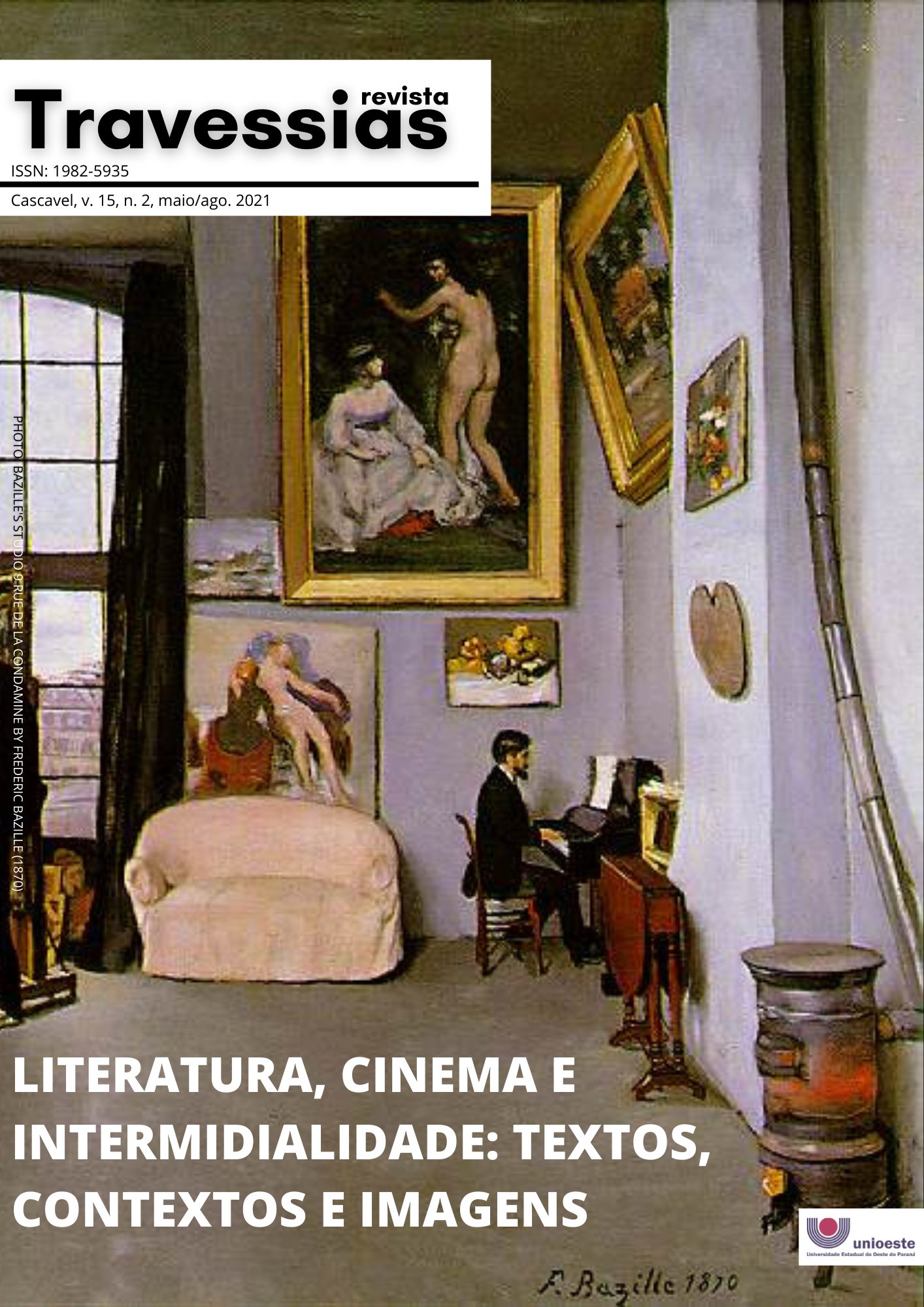The ever-present second Sudanese Civil War on the movie His House (2020)
DOI:
https://doi.org/10.48075/rt.v15i2.27640Keywords:
His House (2020), The Second Sudanese Civil War, Cinematographic techniques.Abstract
The Netflix horror movie His House (2020) was directed by Remi Weekes, produced by Aidan Elliott, and based directly on Felicity Evans as well as Toby Venables’ homonymous screenplay. It displayed a South Sudanese couple, Bol and Rial, who fled their country’s second civil war to England in pursuit of a new British life. For seriatim, the American Psychiatric Association (APA) have highlighted that post-traumatic stress disorder signs (PTSD) individuals could reveal 4 key symptomatic clusters: 1) Intrusions, 2) Avoidances, 3) Negations and 4) Hyper-arousal. The director, Weekes (2020), could apply a plethora of cinematographic techniques (BUCKLAND, 2015, DITTUS, 2013; GIANNETTI, 2001) to represent his protagonists’ various PTSD signs. Among the many cinematographic techniques applied, Weekes (2020) explored masterfully the mise-en-shot, the lighting and the set design. The spectators were able to identify the clear PTSD cinematic representations such as Bol’s recurrent dreaming intrusions to his psyche as well as Rial’s subsequent avoidances toward her daughter. Moreover, Weekes (2020) unveil his main characters’ flawed characterization through their own negations of their surroundings and high expectations of their new British lives. Through the meticulously chosen cinematographic techniques, the downtrodden couple Bol and Rial’s narrative journey got even stonier, by far more complex and intensely less melodramatic.Downloads
References
AMERICAN PSYCHIATRIC ASSOCIATION. Diagnostic and statistical manual of mental disorders (5th ed.). Arlington, VA: American Psychiatric Publishing, 2013.
BAZIN, André. What is cinema? Vol. 1 & 2. Berkeley: University of California Press, 1971.
BASSIL, Noah. The Post-Colonial State and Civil War in Sudan: The Origins of Conflict in Darfur. London; New York City: I.B. Tauris, 2013.
BEIDLER, Philip. Ghosts, Demons, and Henry James: The Turn of the Screw at the Turn of the Century. Columbia: University of Missouri, 2015.
BUCKLAND, William. Film Studies: An Introduction. Hachette, Great Britain, 2015.
BURGOYNE, Robert. The Hollywood Historical Film. Oxford: Blackwell, 2008.
CHEKROUD, Adam et al. PTSD and the War of Words. In: Chronic Stress, New York, vol. 2, 2018.
COATS, Daniel Worldwide Threat Assessment. American Senate Select Committee on Intelligence, USA, 2019.
COLLINS, Allan. “His House” Review: A Haunting, Ouf of the Past. Rolling Stone. São Francisco, 2020.
D’ARCY, Geraint. Critical Approaches to TV and Film Set Designs. Routledge, New York, 2019.
DERVISHI, Eglantina et al. Early Traumatic Experiences and Their Relationship with the Emergence of Depressive Symptoms in Adulthood. Psychological Thought, v. 12, n. 1, p. 30-40, 2019.
DITTUS, Rubén. El dispositivo-cine como constructor de sentido: el caso del documental político. Cuadernos.info, Santiago de Chile, Pontificia Universidad Católica de Chile, n. 33, p. 77-87, dic. 2013
DORRINTONG, Nicola et al. Family functioning, trauma exposure and PTSD in a middle-income community sample. Journal of Affective Disorders, 245, 2019.
GIANNETTI, Louis. Understanding Movies. Boston, Prentice Hall, 2001.
IRIBARREN, Javier. et al. F. Post-Traumatic Stress Disorder: Evidence-Based Research for the Third Millennium. Los Angeles, USA, 2005.
JOHNSON, Douglas H. The Root Causes of Sudan's Civil Wars (4th ed.). Oxford, Kampala, Nairobi: International African Institute, 2007.
NEALE, Godfrey. Genre and Hollywood. London: Routledge, 2000.
PERKINS, Harvey C. and THORNS, David C. “The making of home in a global context”, In: Forrest, R. and Lee, J. (Eds.), Housing and Social Change, Routledge, London, 2003.
PLAUT, Martin. Understanding Eritrea: Inside Africa's Most Repressive State. Oxford: Oxford University Press, 2016.
SHORTER, Georgina. Designing for the Screen: Production Design and Art Direction Explained. Marlborough: The Crowood Press, 2012.
SULEIMAN, Mahmoud. A. Celebrate the 48th anniversary of Sudan's glorious October 1964 revolution. Sudan Tribune, 2012.
VUYLSTEKE, Sarah. Identity and Self-determination: The Fertit Opposition in South Sudan. HSBA Briefing Paper. Geneva: Small Arms Survey, 2018.
Downloads
Published
How to Cite
Issue
Section
License
Creative Copyright Notice
Policy for Free Access Journals
Authors who publish in this journal agree to the following terms:
1. Authors keep the copyright and grant the journal the right of first publication, with the work simultaneously licensed under the Creative Commons Attribution License, which allows sharing the trial with acknowledgment of authorship and initial publication in this journal.
2. Authors are authorized to take additional contracts separately, for non-exclusive distribution of the work version, published in this journal (eg publish in institutional repository or as a book chapter), with acknowledgment of authorship and initial publication in this journal.
3. Authors are allowed and encouraged to publish and distribute their work online (eg in institutional repositories or on their personal page) at any point before or during the editorial process, as this can generate productive changes, as well as increase both impact and citation of the published trial (See The Effect of Free Access).
Creative Commons License
This work is licensed under a Creative Commons Attribution–NonCommercial-shareaswell 4.0 International License, which allows you to share, copy, distribute, display, reproduce, completely or part of the work, since there is no commercial purpose, and authors and source are cited.



